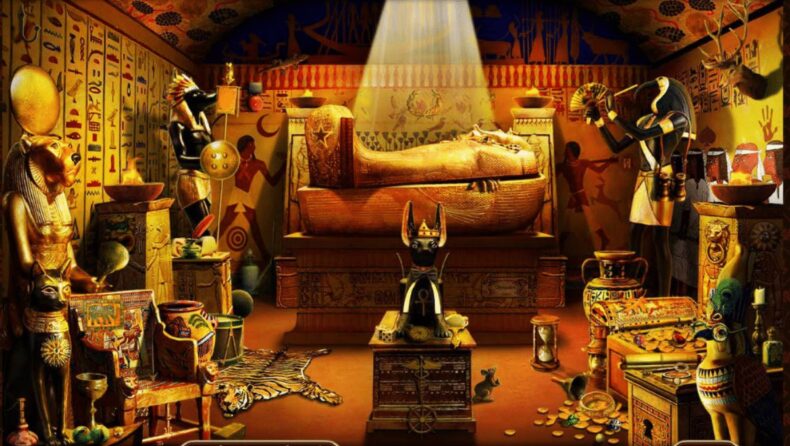LATEST ARCHAEOLOGICAL DISCOVERY
After the famous discovery of King Tut Mummy, Experts have uncovered some 100 sarcophagi at an ancient necropolis south of the Egyptian capital Cairo. The country’s tourism minister described the find as a “treasure.” Archaeologists in Egypt have uncovered a treasure trove of some 100 intact sarcophagi dating back more than 2,500 years, the government said on Saturday. Officials said the discovery of the sealed wooden coffins in the Saqqara necropolis south of Cairo was the largest such find this year. Experts who worked on the excavation said they belonged to top officials of the Late Period and the Ptolemaic period of ancient Egypt. One coffin revealed a mummy wrapped in a burial shroud adorned with brightly collared hieroglyphic pictorials.

THE IMPACT OF THIS DISCOVERIES
Saqqara was an active burial ground for more than 3,000 years and is a designated UNESCO World Heritage Site.Archaeologists in the area found 59 other well-preserved and sealed wooden coffins just over one month ago.”Egypt tourism has boost , Saqqara has yet to reveal all of its contents. It is a treasure,” Antiquities and Tourism Minister Khaled al-Anany said at the unveiling ceremony.Excavations are still underway. Whenever we empty a burial shaft of sarcophagi, we find an entrance to another.” More than 40 statues of ancient deities and funerary masks were also discovered, he said.
Another two wooden statues were found in the tomb belonging to an ancient judge of the 6th dynasty, according to Mostafa Waziri, secretary general of the Supreme Council of Antiquities.
Archaeologists also hope to find an ancient workshop for manufacturing wooden coffins for mummies soon, he said. They will be displayed in several museums across Egypt including the yet-to-be-opened Grand Egyptian Museum at the Giza plateau.
Ministers hope such discovery will help boost tourism, which has been badly hit by the global coronavirus pandemic and the aftermath of a 2011 uprising that toppled dictator Hosni Mubarak.
ts discovery, therefore, provided valuable information on the religion, rituals, and culture of the ancient Egyptians. This civilization has been credited with MANY inventions that really changed the world and are still used today. Some of the inventions include writing (hieroglyphics), ink, make up, advancement in medicine, toothpaste, door lock, plow, calendar, and sundial to name a few.The development also sheds light on the elaborate mummy preservation process that included drying of the body, removal of the digestive tract and brain and embalming of the corpse. The Egyptians have influenced us in our inventions, math, writing, medicine, religion, sports, and music. Ancient Egyptians were able to build massive movements, pyramids, and temples. Few of the architecture skills used by the Egyptians are still used today. They built huge tombs for their Pharaoh, called pyramids.

CONCLUSION – EGYPT – FULL OF TREASURE LANDS ?
At the beginning of December, archaeologists presented their discovery of an extremely well-preserved tomb at Saqqara near Cairo. It belonged to a high priest called Wahtye, and is more than 4,000 years old. Gilded mummy masks were found in July, also at Saqqara. A necropolis with dozens of stone sarcophagi and artistic treasures was discovered in the spring near the Nile Valley city of Minya. And in November an Egyptian-German research team unearthed some fascinating limestone blocks with very old inscriptions in the ancient city of Heliopolis, now an impoverished suburb of Cairo. Some of these finds can be dated to the 12th and 20th dynasties of the Ancient Egyptians, making them around 4,000 years old.
People tend to assume that, in Egypt, everything important has already been discovered, particularly in the vicinity of the Pyramids or in the Valley of the Kings. How is it possible that spectacular finds are still being made?

By no means has everything been discovered and excavated around the Pyramids and in the Valley of the Kings. The same is true of the great cemeteries like the one in Saqqara. For more than 3,000 years, it was the main cemetery of the Egyptian capital, Memphis. More than 50,000 people lived in Memphis, probably even more at times. If you look at old maps from the 19th century, you can see that there are lots of places where there’s still something to be excavated; people just haven’t got around to it until now.
SOCIAL MEDIA HEADING –
- Beyond King Tut , is his treasure
- Egypt uncovers tombs treasure
Read More-https://tdznkwjt9mxt6p1p8657.cleaver.live/how-did-the-egyptians-make-mummies/













